Excerpts from Jim Conrad's
Naturalist Newsletter
Entry dated April 19, 2024, from notes taken about 1.5km northeast of Puerto de los Velazquez, Municipality of Pinal de Amoles; N21.138°, W99.665°, elevation ~2780 meters (~9120 feet); oak/pine forest on limestone bedrock; in the Eastern Sierra Madre Mountains of east-central Querétaro state, MÉXICO
ALUMROOT
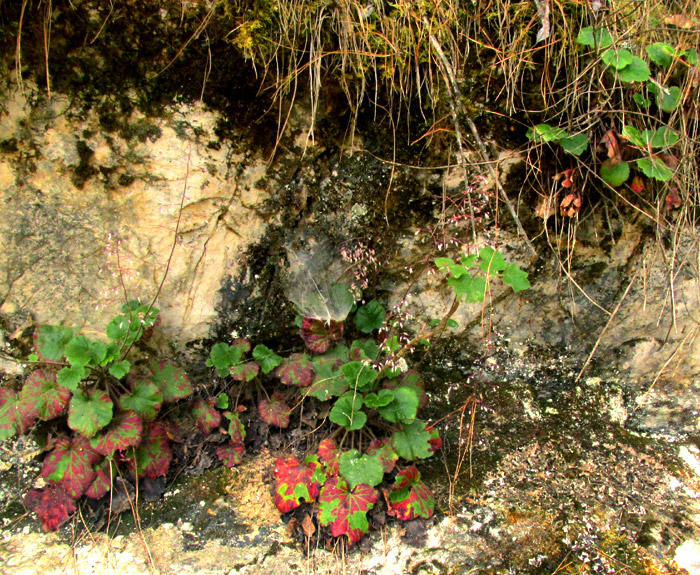
Rooted in shattered rock associated with a a geological fault through limestone, on the mountain's northern slope the above plants sheltered on the face of a relatively moist, shady roadcut. The fault zone's crumbly rock afforded easier downward passage of rainwater than through unfractured rock, and several species took advantage of the water's special availability.
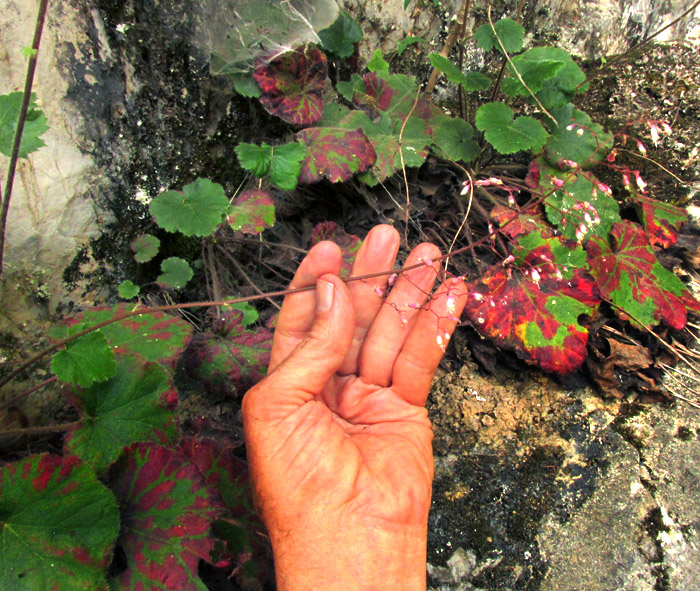
Above, my hand stabilizes an otherwise wind-shaken, panicle-type inflorescence of small, white blossoms belonging to a plant entering the picture's left side. Behind the flowers, other plants produce inflorescences also leaning toward open space, beyond the picture's right side.
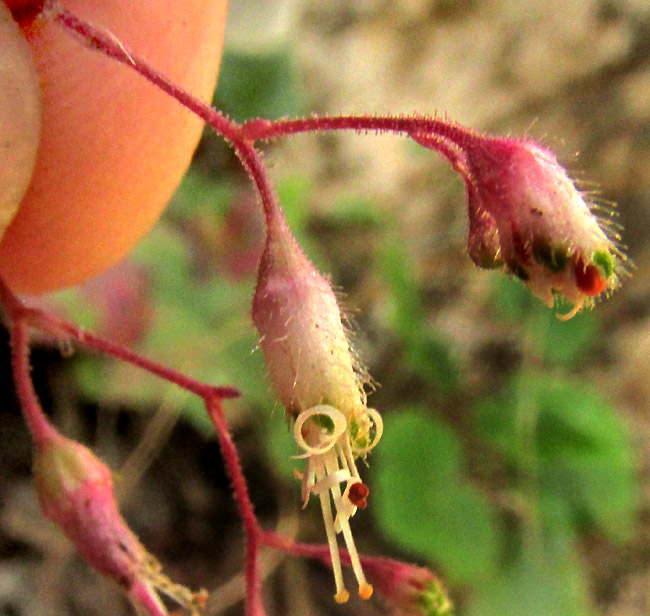

In the center of the above picture the purplish, hairy, tubular, downward-directed item constituting most of the flower is the somewhat bilaterally symmetrical calyx. The small, slender,white objects curling over the calyx's sides are petals, of which there should be five. Also there should be five stamens and two styles, and in the above picture one wonders which is which. The close-up at the right indicates that the taller things are styles with yellow stigmas, while the shorter ones are stamens with dark brown anthers. Other anthers appear to be aborted or maybe eaten.
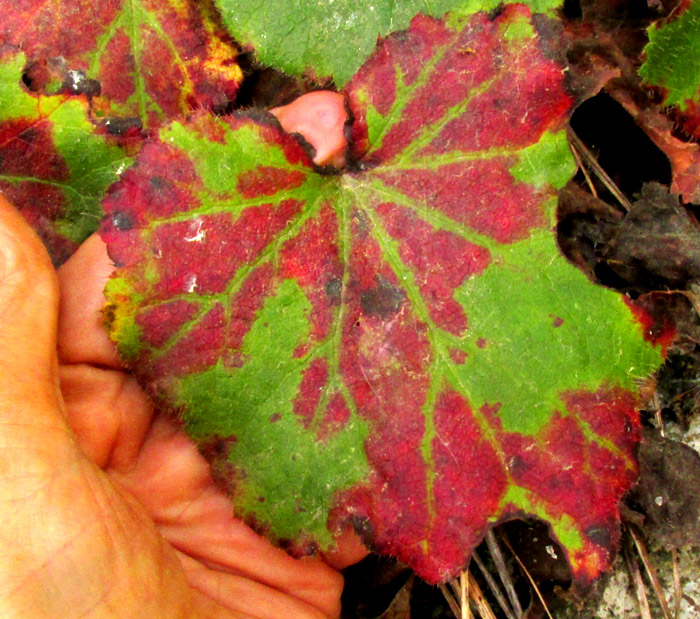
The above leaf is prettily splotchy perhaps because it's old, or maybe because of a nutrient deficiency, or even the fact that this area is experiencing an ongoing weather pattern the North American Drought Monitor classifies as its droughtiest category of drought, the D4. Later I'd find that the leaf's size is important for distinguishing which species it is; using my hand as a scale, it's clear that the leaf is about 8cm long and wide (3.2 inches).
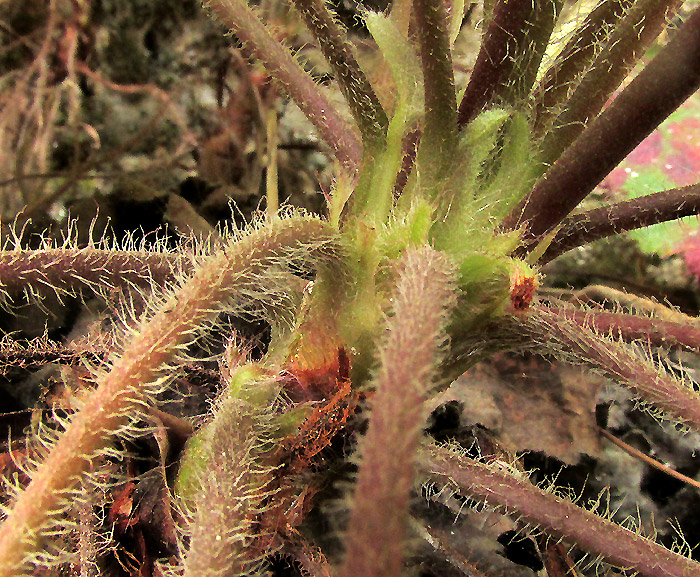
Above, long-hairy leaf petioles sprout from an unseen rhizome. Many of the hairs are tipped with tiny glands.
Northerners who pay attention to their wildflowers may recognize this as a very typical kind of plant among rocky outcrops in moist, shaded environments. The plants belong to a plant family overwhelmingly occurring in the world's north-temperate, arctic and alpine regions, the Saxifrage Family, the Saxifragaceae. Here in Mexico's high mountains it's temperate enough for them.
The Flora of North America registers for its coverage area about 23 genera embracing quite a few species. Here in the uplands of central Mexico known as the Bajío region, just one genus with two species is represented. The genus is Heuchera, whose species in North America often are referred to as alumroots. Of the two alumroot taxa found here our pictures show the one with leaves mostly over 7.5 cm across (3 inches) -- HEUCHERA LONGIPETALA variety ORIZABENSIS.
The species Heuchera longipetala is endemic just to upland central Mexico, and inhabits rocky, moist, shady spots like our plants. Three varieties of the species are recognized, and our orizabensis, which earlier was regarded as a full species, occupies a somewhat smaller part of that region.
While the Flora del Bajío says that sometimes members of the Saxifrage Family are cultivated as ornamentals, I find no other reference to traditional use of the species in upland central Mexico. Many alumroot cultivars, mostly hybrids, are sold as foliage plants. Various indigenous American groups in North America used different alumroot species medicinally for a variety of ailments.